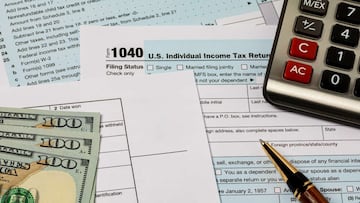IRS: How much less will I receive in tax refunds in 2024 compared to 2023?
Statistics released by the IRS show taxpayers are receiving smaller refunds so far this year. The tax agency says this may change as the season progresses.

The 2024 tax season began on Jan. 29, and the Internal Revenue Service has been receiving and processing returns for the 2023 fiscal year.
Taxpayers have until April 15 to file their return and pay applicable taxes in order to receive their refund. According to a recent IRS statistical report, filers have been receiving less money than they did last year.
IRS refunds are 29% lower so far in 2024
According to data released by the IRS earlier this month, Americans on average have been receiving tax refunds in 2024 that are 29% smaller compared to last year.
The average refund issued from the start of the tax season through Feb. 3 of last year was $1,963. This year, from the start of the tax season through Feb. 2, refunds only averaged $1,395.
Direct deposit-only refunds averaged $2,056 by February 3, 2023 and this year, they averaged $1,543 through the aforementioned period. This is a drop of 25%.
READ ALSO: Claiming Child Tax Credit can delay your refund
The IRS clarifies that the data on the refunds covers a longer period from last year compared to this year. The statistics show numbers from the start of tax season through a similar end period. However, the tax season began on Jan. 23 in 2023, while this year, it started on the 29th. There has therefore been less seven days worth of data to analyze and calculate averages.
By Feb. 2 this year, the IRS issued only 2.6 million refunds. Last year, by the same time, it had processed nearly 8 million.
The IRS has cautioned against concluding that all refunds will turn out to be this much lower for all taxpayers. The average amounts that have so far been recorded may change as the tax season progresses.
READ ALSO: What days of the week are tax refunds sent?
How can I track my tax refund?
The IRS says it can take up to 21 days to send refunds. Those who filed their return electronically and chose direct deposit as a payment method are the most likely to receive the money earlier.
Those who did not file electronically or chose a paper check as a payment method, may receive their refund in six to 12 weeks after sending their return.
To check the status of your refund, you can use the “Where’s my refund?” tool on the IRS official website.
You can also check the status of your payment through the IRS2Go mobile application, where you can track your refund payment 24 hours after the IRS receives the electronic return or in about four weeks if you filed your return on paper.





